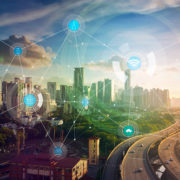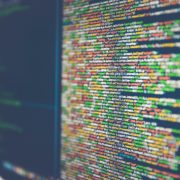What Does it Mean to Be a Smart City?
As cities around the world embrace the changes wrought by digital technologies, there’s still a lot of confusion about what it means to be a smart city. Generally characterized as an urban area that uses data and technology to improve operational efficiency, smart cities promise to enhance how people relate to their environment.
Smart cities are developed by technologists and urban planners who gather and analyze information to improve problem areas. These can include traffic, pollution, public safety, public health and wellness, sustainability, and much more. Institutions like schools, hospitals, power plants, and waste management are able to use data to optimize operations and operate quickly and efficiently.
Being a smart city can mean many things and it can look very different depending on where you are, but the objective is always the same – using technology to create a sustainable future and improve people’s quality of life.
Smart City Technology is Here
Smart cities feature a combination of technologies including the Internet of Things (IoT), artificial intelligence (AI), mobile technology, networks of embedded sensors that read and respond to data, the semantic web, and many other platforms that interface with one another. These technologies are employed to gather actionable data and improve efficiency.
Examples of smart city technologies include alerts to help people find parking more easily, or the ability to change traffic patterns in real time to respond to peak congestion. It can include systems that monitor air quality in buildings and automatically engage air purification systems when necessary, or systems that automatically harness natural sources of power like wind and solar energy. Smart city technology can even help preserve resources by detecting gas or water leaks, instantly sending alerts to engage the appropriate department.
Effective Communication Between Government and Residents
Most government agencies, whether municipality, federal or provincial, struggle to effectively communicate with residents. Smart city technology aims to solve this problem by finding new ways to engage with residents to more easily understand their needs and serve them more effectively.
Digital mapping is an example of how many governing agencies engage technology to communicate more efficiently. Digital mapping provides a platform to easily integrate, consolidate and analyze data quickly to monitor assets and streamline workflows for great efficiency. It’s a simple way to provide visual information to residents about their community, while also offering them the ability to input observations and experiences and get feedback in real time.
Prevent Problems and Hazards Before They Happen
A major benefit of the data cities gather using smart technologies is the ability to generate predictive analytics to improve safety and identify problems before they happen. Spatial technology plays an important role here, providing accurate, updated hazard data to monitor and identify risks quickly.
An example of this is the ability to monitor for the likelihood of fire by using spatial technology to review various data points layered onto a map. This information can easily illustrate new construction, or older buildings that haven’t been updated to meet current safety codes and standards. These areas could serve as a potential warning in need of being carefully monitored to mitigate the risk of fire.
Smart Cities are Growing
With current estimates showing that 70% of the world’s population will live in cities by 2050, measures to improve safety and sustainability are critical. Growing populations put pressure on government agencies to ensure cities are functioning at optimal levels.
Whereas smart city technology was once pegged for large cities, urban areas large and small are instituting digital technologies to optimize operations. The International Data Corporation projects that smart city investments will reach $80 billion in 2018 across a range of communities throughout the world, and is likely to grow to $135 billion by 2021. Investments include data-driven public safety initiatives, efficient energy, sustainable infrastructure and much more.
We can expect some major innovations for the future of smart cities, including an increase in video surveillance with monitors that can respond to queues and alert the appropriate authorities when needed. We can expect greater sustainability, and the ability to more efficiently monitor precious resources like energy and water. More than anything, these changes promise a happier, healthier future for people around the world.
Interested in learning more about becoming a smart city? Download our guide here.



